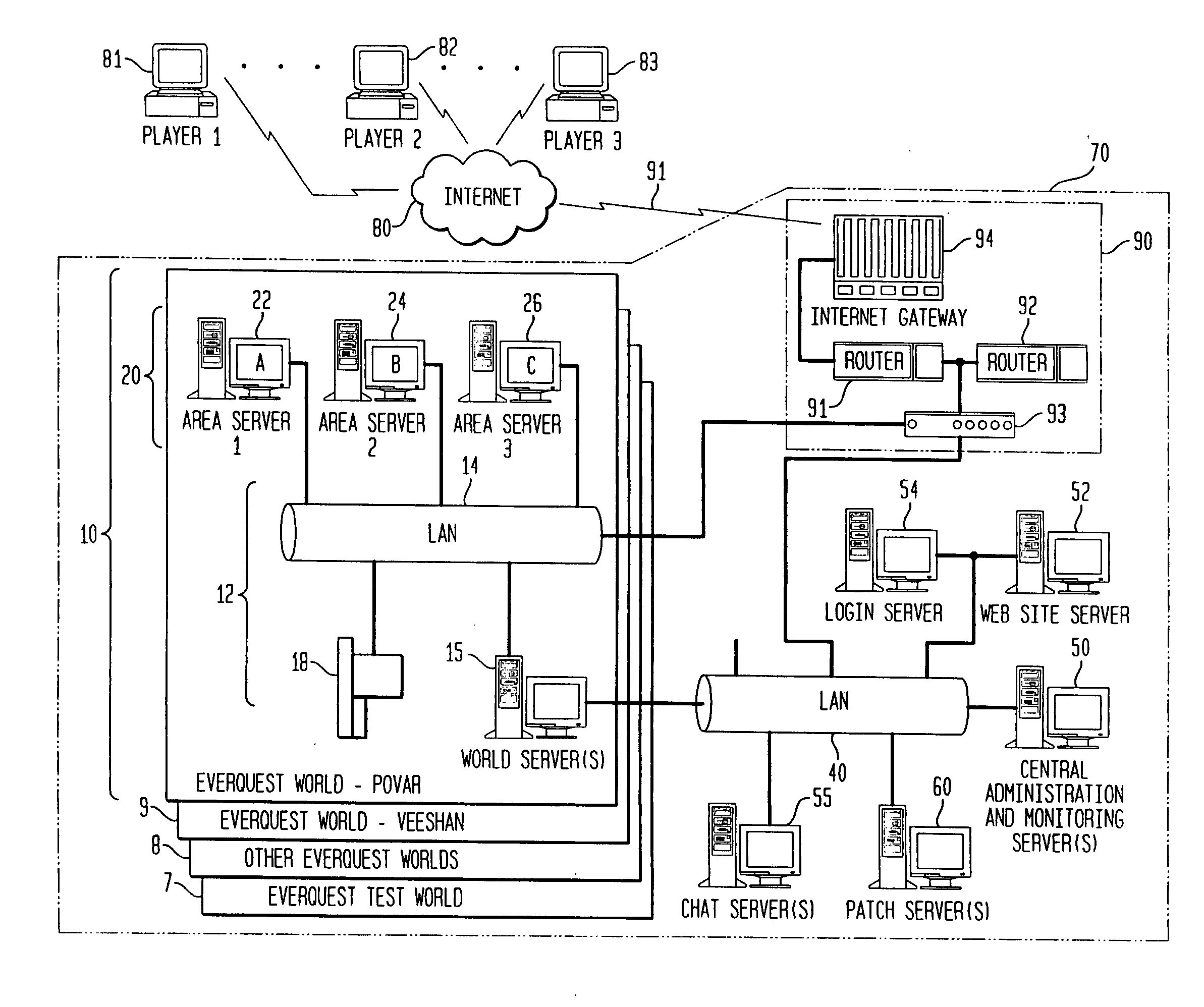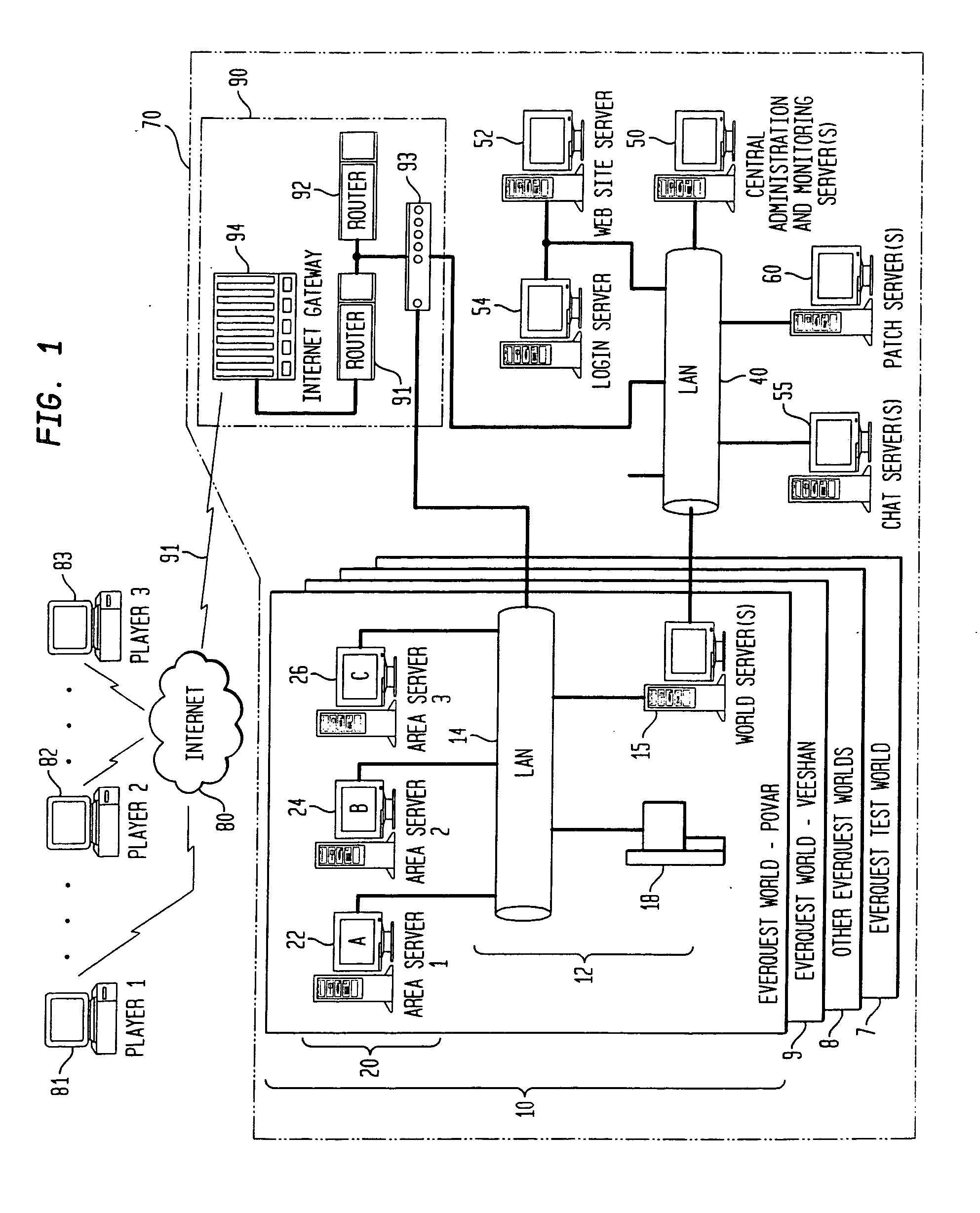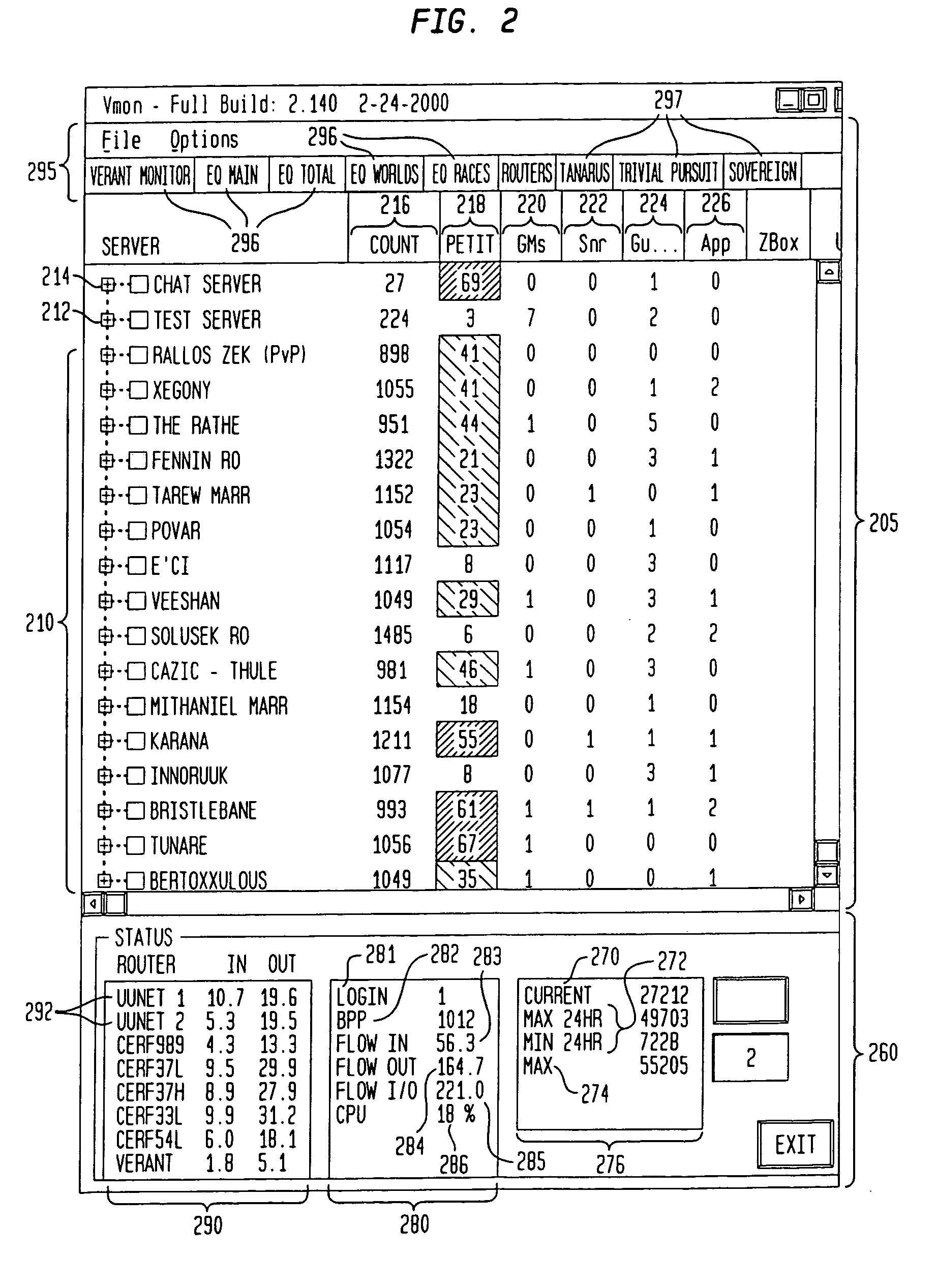Data transmission protocol and visual display for a networked computer system
a networked computer system and data transmission technology, applied in the field of multi-user virtual reality systems, can solve the problems of limited system, inability to see or hear anyone, and inability to communicate in real time, and achieve the effect of efficient transmission
- Summary
- Abstract
- Description
- Claims
- Application Information
AI Technical Summary
Benefits of technology
Problems solved by technology
Method used
Image
Examples
Embodiment Construction
[0074] Referring now to FIG. 1, a large scale multi-player virtual reality game system 70 according to a preferred embodiment of the present invention is provided. Although various aspects of the present invention are employed in the EverQuest™ game, and specific examples of the EverQuest™ game are referenced herein, it should be understood that all aspects of the present invention are not necessarily employed in the EverQuest™ game. The multi-player system of the present invention consists of a computer server complex used to administer a number of virtual reality worlds in which the players may interact. Computer software to implement the virtual reality worlds is generally distributed throughout the computer server complex 70, including possibly to user consoles 81-83. The software operates on the users' computers 81-83 and the computer servers as described.
[0075] Each of the virtual worlds are administered as a separate world complex 7-10. Each world server complex is connected...
PUM
 Login to View More
Login to View More Abstract
Description
Claims
Application Information
 Login to View More
Login to View More - R&D
- Intellectual Property
- Life Sciences
- Materials
- Tech Scout
- Unparalleled Data Quality
- Higher Quality Content
- 60% Fewer Hallucinations
Browse by: Latest US Patents, China's latest patents, Technical Efficacy Thesaurus, Application Domain, Technology Topic, Popular Technical Reports.
© 2025 PatSnap. All rights reserved.Legal|Privacy policy|Modern Slavery Act Transparency Statement|Sitemap|About US| Contact US: help@patsnap.com



